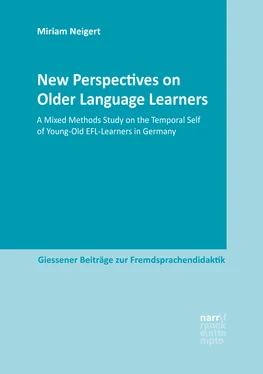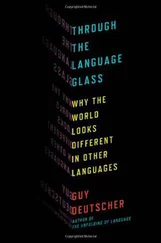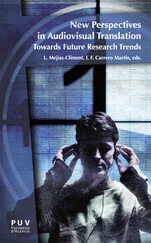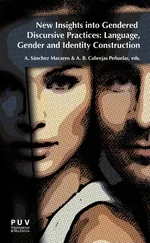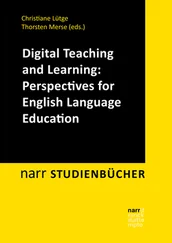Miriam Neigert - New Perspectives on Older Language Learners
Здесь есть возможность читать онлайн «Miriam Neigert - New Perspectives on Older Language Learners» — ознакомительный отрывок электронной книги совершенно бесплатно, а после прочтения отрывка купить полную версию. В некоторых случаях можно слушать аудио, скачать через торрент в формате fb2 и присутствует краткое содержание. Жанр: unrecognised, на английском языке. Описание произведения, (предисловие) а так же отзывы посетителей доступны на портале библиотеки ЛибКат.
- Название:New Perspectives on Older Language Learners
- Автор:
- Жанр:
- Год:неизвестен
- ISBN:нет данных
- Рейтинг книги:4 / 5. Голосов: 1
-
Избранное:Добавить в избранное
- Отзывы:
-
Ваша оценка:
- 80
- 1
- 2
- 3
- 4
- 5
New Perspectives on Older Language Learners: краткое содержание, описание и аннотация
Предлагаем к чтению аннотацию, описание, краткое содержание или предисловие (зависит от того, что написал сам автор книги «New Perspectives on Older Language Learners»). Если вы не нашли необходимую информацию о книге — напишите в комментариях, мы постараемся отыскать её.
New Perspectives on Older Language Learners — читать онлайн ознакомительный отрывок
Ниже представлен текст книги, разбитый по страницам. Система сохранения места последней прочитанной страницы, позволяет с удобством читать онлайн бесплатно книгу «New Perspectives on Older Language Learners», без необходимости каждый раз заново искать на чём Вы остановились. Поставьте закладку, и сможете в любой момент перейти на страницу, на которой закончили чтение.
Интервал:
Закладка:
A term that is often used alongside young-old and one that will add to my definition of my study participants is Third Age (Laslett 1987, 1994; Gilleard & Higgs 2002). Laslett’s definition of the Third Age moves away completely from the chronological dimension of age to a more sociological understanding of Third Agers. According to him, Third Age is a phase in life when one has achieved one’s main goals (‘era of personal fulfilment’) and is now free from obligations regarding such things as work or child bearing. He considers the existence of Third Age starting in the second half of the 20 thcentury in the British population (1987: 137). Before the rise of the Third Age, and reminiscent of the aforementioned three-box model, people moved directly from the Second Age (independence, child bearing, earning and saving for retirement) to the Fourth Age (dependence, decrepitude, death), which still adds a negative connotation to retirement today. With the prolonged life expectancy and quality of life in old age in the 20 thand this century, Third Age has evolved as a time in life when one is without familial or employment obligations but not yet dependent on others. It is a time when the young-old or Third Agers can reap the fruits of their labour usually after the onset of retirement, making this transition in the life course yet another defining characteristic of the young-old.
Going back to life course perspective, Elder et al. (2003: 8) remind us what transitions such as retirement mean to individuals: “Transitions often involve changes in status or identity, both personally and socially, and thus open up opportunities for behavioral change.” Retirement is often (though not exclusively) regarded as the onset of Third Age and the often-debated transition from the Third Age to the Fourth Age is seen in the loss of independence due to factors such as illness. Laslett (1987) points out that retirement is an important, but not a necessary, condition for the Third Age, since some people can find personal fulfilment early in their lives meaning that, for some, Third Age can even occur much earlier in life, when others are still experiencing Second Age. This is where the definitions of Third Agers and young-old diverge, making the term Third Age less functional overall (Staehelin 2005: 167). Based on this and the discussion in the previous section, the cohort effects and the retirement factor constitute important characteristics of what I consider young-old. In this study, these are not the only characteristics but they are nevertheless more determining than chronological age.
How do the young-old – similar to Laslett’s Third Agers – make use of their time of personal fulfilment and their maintained independence in retirement? As mentioned above, most of the young-old grew up expecting a three-box model life course. Saving and preparing for their Third Age, they also formed expectations of what it would be like once they are free from other obligations and hopefully still independent enough to do more travelling, gardening and – in the context of this study – engaging in lifelong learning (Hardy 2011). In other words, with these expectations of retirement, the young-old have formed possible selves of their future retired self (see next chapter). This trend among the images of previous and current young-old cohorts has been picked up on an overall societal level and redirected to an image of optimal / successful / productive / positive ageing: defying age-related diseases and maintaining an active lifestyle in later life (Daatland 2005: 375; Withnall 2012: 652-657; Rowe & Kahn 1997: 433; Phillips et al. 2010: 209-213; Schmidt-Hertha 2014; Schaie 2015). Due to the expanding life expectancy in relative good health and independence after retirement, and with it, the rise of the Third Ager and Young-Old concepts, expectations toward this phase of life and age group changed within industrialized societies. Making the most of one’s retirement, maintaining quality of life for as long as possible, and ‘ageing successfully’ (Rowe & Kahn 1997; Schaie 2015) have become key issues for the young-old. Nevertheless, the goal to age successfully has also put more pressure on the individual. However, making lifelong learning obligatory (e.g. by employers or health insurances) could possibly compromise an individual’s motivation to pursue lifelong learning (Pongratz 2003; Gronemeyer & Buff 1992; Whitnall 2012; Kade 2009).
2.1.4 Psychological Dimension
The psychological dimension of ageing looks at how our personality, our mental functions (e.g. our memory or intelligence), and sensory and perceptual processes change as we get older (Phillips et al. 2010: 12f.; Lehr 2007). In particular, how old age and ageing are perceived in society and by the young-old themselves is interesting for this study. This will also be discussed with regard to language learning in greater detail and from a more temporal perspective (i.e. in terms of past, present, future/ideal possible selves) and in the following chapter.
Regarding the perception and self-perception of the young-old, we can see how the components of the term – ‘young’ and ‘old’ – come into play in this and other dimensions; biological ageing, or the aforementioned bio markers such as wrinkles, grey hair, or sensory impairments indicate the ageing process and mark someone as ‘old’ (Karl 2009: 23). The chronological dimension together with the sociological dimension also denote a traditionally constructed old age by setting a point in time when a person moves from working and thus contributing to the economy, to a phase in life when a person withdraws from the workforce and receives a pension. From the sociological discussion of age, we can see how the interplay of these dimensions and developments define when a society regards an individual as old. These rules or perceptions that are established on a societal level also trickle down to the level of the individual’s perception of his or her age and the ageing process, making it a more internal dimension of the construction of age (compared to the sociological dimension of ageing).
The psychological dimension of ageing takes a closer look at how individuals perceive and cope with the ageing process (Mlinac et al. 2011; Brandstädter et al. 1993; Ammon & Maehr 2008; Kotter-Grühn & Hess 2012). Several studies have indicated, for example, that older study participants usually feel younger than their actual chronological age (Smith & Ryan 2015: 311; Kade 2007: 14). With regard to resilience and coping with the ageing process, Mlinac et al. (2011: 4f.) report that older people tend to rate others of the same age more poorly in terms of negative ageing stereotypes while perceptions of themselves improved thereby indicating a coping strategy: “This mechanism can be seen as a protective factor; older adults reject negative information about aging rather than allowing it to harm their self-perceptions.” (2011: 5) The psychological dimension is also related to the ability of a young-old individual to adapt to new circumstances and environments as he or she ages. Thus, going back to the sociological age factor of retirement, psychological gerontologists have divided this crucial transition in the life course into three phases: retirement planning, retirement decision-making, and retirement transition and adjustment (Wang & Shi 2015: 349).
How the young-old progress through these three phases of retirement – from envisioning their life in retirement, planning, and exiting their working lives to settling into their post-retirement life, ideally close to what they previously envisaged – can tell us a lot about their ability to cope psychologically with change in later years. This information also helps them to maintain or even improve their psychological wellbeing. Dorfman and Kolarik (2005), for instance, report that engaging in bridging employment, volunteer work, and leisure activities (which can also include lifelong learning activities such as language learning) contribute to an improvement of psychological wellbeing in the transition and adjustment phase of retirement. It is thus not surprising that more and more young-old people engage in language learning as a way of improving and maintaining their post-retirement quality of life – i.e. enhancing personal agency, control, and emancipation (Ammon & Maehr 2008; Moody 2010: 485; Walker 2010; Whitnall 2012: 652; Ramírez Gómez 2016: 136). For adult learner institutions, this transitioning phase in life constitutes a promising starting point for new educational programmes (Schmidt 2005; Costard 2006; Tippelt et al. 2009; Völkening 2006).
Читать дальшеИнтервал:
Закладка:
Похожие книги на «New Perspectives on Older Language Learners»
Представляем Вашему вниманию похожие книги на «New Perspectives on Older Language Learners» списком для выбора. Мы отобрали схожую по названию и смыслу литературу в надежде предоставить читателям больше вариантов отыскать новые, интересные, ещё непрочитанные произведения.
Обсуждение, отзывы о книге «New Perspectives on Older Language Learners» и просто собственные мнения читателей. Оставьте ваши комментарии, напишите, что Вы думаете о произведении, его смысле или главных героях. Укажите что конкретно понравилось, а что нет, и почему Вы так считаете.
